Are you worried about dark corners around your property? Poor lighting can attract trouble and create hidden dangers. But LED floodlights offer a simple, powerful solution for security and peace of mind.
The short answer is that properly installed LED floodlights dramatically improve nighttime safety. They provide bright, uniform light that eliminates hiding spots, deters potential intruders, and helps prevent accidents. By turning dark, hazardous areas into well-lit spaces, they create a secure environment for everyone.
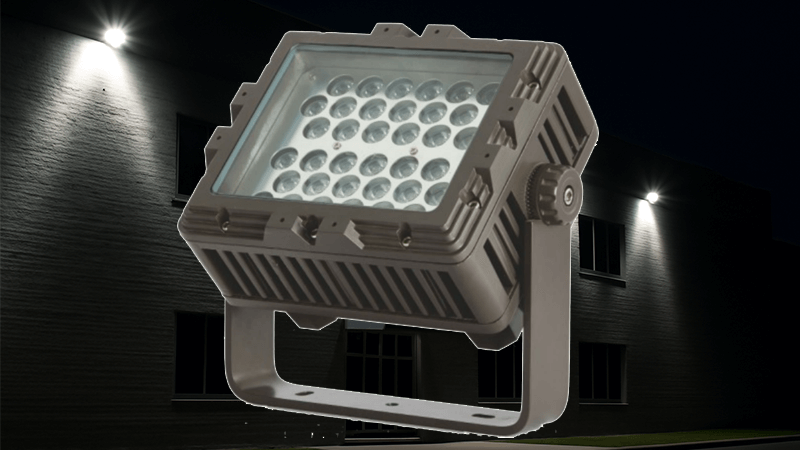
For years, I’ve worked with clients like Shaz, a purchasing manager in the UAE, who need reliable lighting for large-scale projects. He always asks tough questions because safety is his top priority. He doesn’t just want light; he wants the right kind of light. This is a crucial distinction that many people miss. It’s not just about making things bright; it’s about making them safe and visible in a smart way. Let’s dive into the common questions that people like Shaz ask me, so you can make a better choice for your own projects.
Is it safe to leave flood lights on all night?
You want constant security, but worry about high energy bills or disturbing your neighbors. You might even wonder about the fire risk. Good news, modern LEDs solve these problems easily.
Yes, it is perfectly safe to leave modern LED floodlights on all night. They are engineered for long lifespans, produce very little heat compared to old halogen bulbs, and use minimal electricity. This makes them a cost-effective and low-risk solution for continuous overnight security.
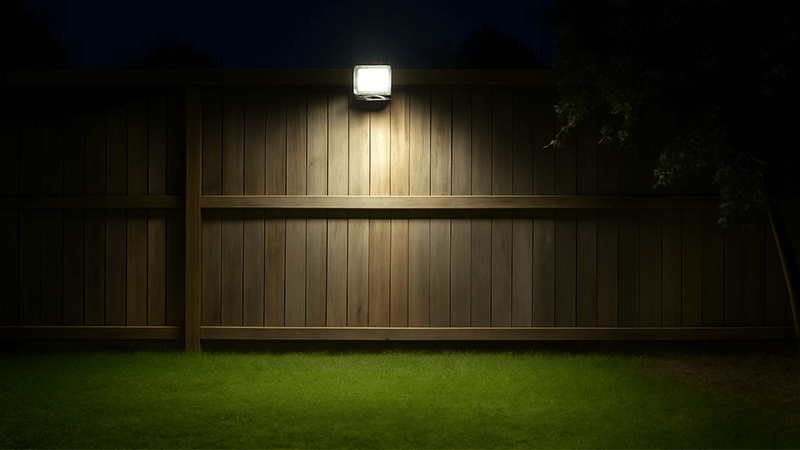
When I first started in this industry, factories used old metal-halide or halogen floodlights. Those things got incredibly hot. You could feel the heat from meters away. Leaving them on all night was a genuine fire concern and a huge drain on electricity. When I started my own company, iPHD, focusing on LEDs was an easy choice.
The technology is just so much better and safer.
Heat and Fire Risk
LEDs are "solid-state" lights. They create light through a semiconductor, not by heating a filament. This means they run much cooler. While they do produce some heat at the base, it’s managed by a heat sink. The front of the light stays cool enough to touch. This massively reduces the risk of fire, which was a real problem with older lighting technologies.
Cost and Energy Efficiency
This is where LEDs truly shine for overnight use. A traditional 500-watt halogen floodlight can be replaced by a 50-watt LED floodlight that produces the same amount of light. That’s a 90% reduction in energy use. Over the course of a year, running a light for 12 hours a night, the savings are huge. For a purchasing manager like Shaz, this translates directly to a lower total cost of ownership for his projects.
Here is a simple comparison:
| Feature |
500W Halogen Floodlight |
50W LED Floodlight |
| Heat Output |
Very High (Fire Risk) |
Very Low (Safe to Touch) |
| Energy Use/Hour |
500 Watts |
50 Watts |
| Estimated Lifespan |
~1,000 hours |
50,000+ hours |
| Risk of Failure |
High |
Very Low |
| Overnight Cost |
High |
Very Low |
The key insight I always share with my clients is this: The lens and reflector design should optimize the beam distribution. This avoids creating blinding hotspots and ensures uniform illumination over a large area. Good design means the light goes exactly where you need it, maximizing safety without wasting energy or creating light pollution for your neighbors.
Do LED lights have negative effects?
You’ve probably heard stories about blue light messing with sleep or bright lights harming wildlife. It’s easy to worry that your lighting choice could cause unintended problems for people or nature.
Yes, LED lights can have negative effects if they are not chosen or used correctly. The main concerns are glare from poorly aimed lights and the "blue light" in some LEDs, which can affect sleep. However, these issues are easily managed by choosing the right product.
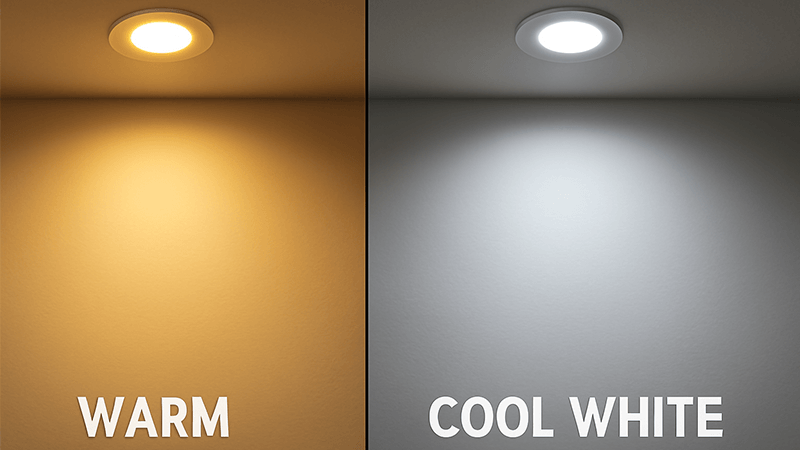
I’ve seen projects go wrong because the wrong type of LED was used. A client once installed super-bright, cool-white floodlights around a residential complex. The residents complained about glare in their windows and said the light felt harsh and unpleasant. We solved it by switching to a warmer color temperature and using fixtures with better shielding. It’s a lesson I share with every customer: not all LEDs are created equal.
The main issues to be aware of are:
Blue Light and Sleep
LEDs can produce a lot of light in the blue part of the spectrum. This is the same kind of light our phones and computer screens emit. Exposure to it at night can trick our brains into thinking it’s still daytime, which can disrupt our natural sleep cycles.
- The Solution: Choose LEDs with a warmer color temperature (CCT). A CCT of 3000K or lower has much less blue light and feels more like traditional incandescent light. It’s much easier on the eyes and better for residential areas.
Glare and Light Trespass
This is a huge issue. Glare happens when a light is so bright it’s hard to see. Light trespass is when your light spills over into your neighbor’s property or up into the sky. Both problems are caused by poor fixture design. As I always say, the optics are critical. Good lens and reflector design directs light down to the ground where it’s needed, preventing it from shining sideways or upwards. This is how you illuminate your property effectively without bothering anyone else.
Wildlife Impact
Bright, cool-white light can confuse birds, insects, and other nocturnal animals. It can disrupt their migration patterns, hunting, and breeding.
- The Solution: Similar to managing blue light for humans, using warmer color temperatures (below 3000K) is much less disruptive to wildlife. Also, using motion sensors ensures lights are only on when needed, giving animals their darkness back the rest of the time.
Here’s how to solve these potential problems:
| Potential Problem |
Simple Solution |
| Sleep Disruption |
Choose LEDs with a warm CCT (3000K or less). |
| Glare / Annoying Neighbors |
Use shielded fixtures and aim them carefully downward. |
| Harm to Wildlife |
Use warm CCTs and install motion sensors. |
Is it safer to have lights on or off at night?
It feels like a paradox. Do lights stop criminals by exposing them, or do they just help them see what they’re doing? You might feel stuck, unsure of the best strategy for real security.
It is almost always safer to have well-placed lights on at night. Consistent or motion-activated light eliminates hiding spots and significantly increases the chance that an intruder will be seen. While poorly placed lights can create shadows, a strategic lighting plan is a proven deterrent.
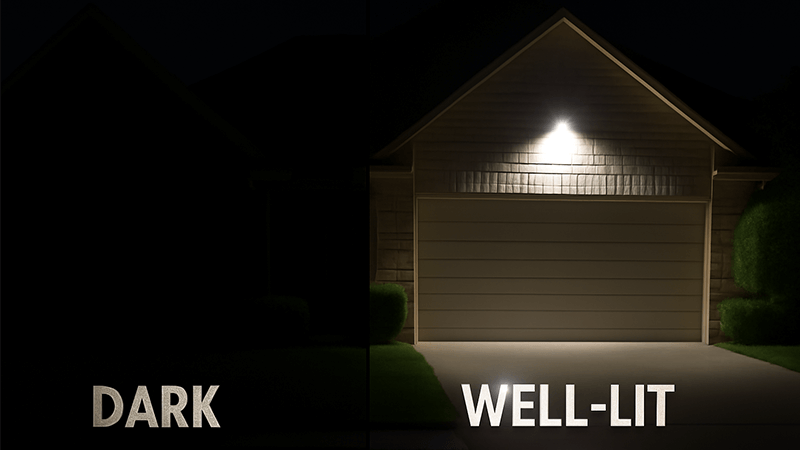
I remember a project for a large warehouse complex. The owner was convinced that having the lights on 24/7 was the only way to be secure. But his electricity bill was enormous. He was spending a fortune to light up empty lots.
We walked the property at night and I showed him the flaws in his plan. His overly bright lights created deep, dark shadows behind shipping containers—perfect hiding spots. The solution wasn’t just "lights on." It was "smart lights on."
We developed a layered lighting strategy:
- Low-Level Ambient Light: We installed low-wattage lighting along main pathways. This provided enough light for employees to see where they were going without costing a lot.
- Motion-Activated Floodlights: At the perimeter and near doorways, we installed powerful motion-activated floodlights.
The result? The property felt safe and navigable, but the energy bill dropped by over 60%. More importantly, the sudden blast of a motion-activated light is far more startling and effective at scaring away a potential thief than a light that is always on.
Here’s a breakdown of the strategies:
| Lighting Strategy |
Security Effectiveness |
Energy Use |
Light Pollution |
| Always Off |
Very Poor. Lots of hiding spots. |
None |
None |
| Always On |
Good, but can create predictable shadows. |
Very High |
High |
| Strategic (Motion-Activated) |
Excellent. Startles intruders, draws attention. |
Very Low |
Low |
The "always on" approach can sometimes suggest that no one is home, like leaving lights on during a vacation. A strategic, motion-activated system feels more responsive and alive. It signals that the property is actively monitored and protected, which is a powerful psychological deterrent.
What is the difference between flood lights and outdoor lights?
When you’re sourcing products for a project, you see terms like floodlight, spotlight, wall pack, and path light. The language can be confusing, and ordering the wrong fixture is a costly mistake.
Floodlights are a specific type of outdoor light. The key difference is the beam angle. Floodlights cast a very wide beam (120 degrees or more) to illuminate a large area. Other outdoor lights, like spotlights, have much narrower beams designed to highlight specific features.
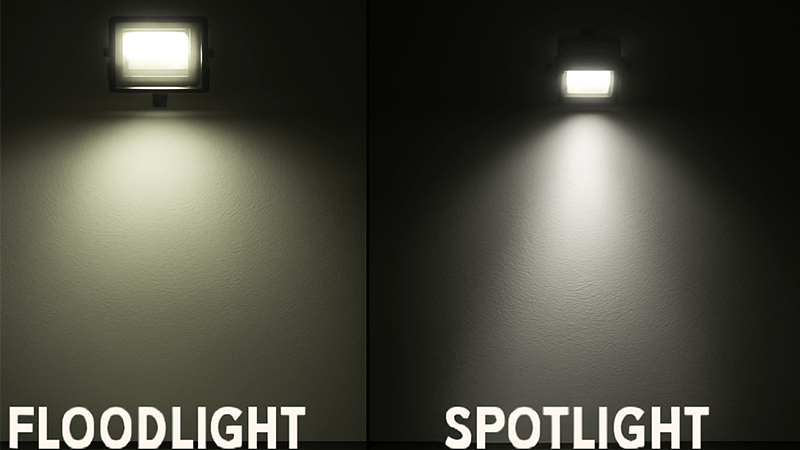
As a manufacturer, I live and breathe these details. "Outdoor lighting" is the general category. It includes everything you might install outside. Think of it like the word "vehicle." A "floodlight" is a specific type, like a "truck." A "spotlight" is like a "motorcycle." Both are vehicles, but you wouldn’t use a motorcycle to haul furniture.
The difference comes down to the optics—the lens and reflector inside the fixture. This is my area of expertise. We design the optics to control the light precisely.
- For a floodlight, we design the lens and reflector to spread the light out as wide as possible while keeping it uniform. The goal is broad coverage for security or general illumination.
- For a spotlight, we design the optics to concentrate the light into a tight, narrow beam. The goal is to draw attention to a single object, like a flag, a tree, or an architectural detail.
Shaz, my customer in the UAE, needs to understand this distinction perfectly. If he needs to light up a whole parking lot, he sources floodlights. If his client wants to highlight the facade of a new hotel, he sources spotlights and wall grazers.
Here’s a simple chart to help you differentiate:
| Light Type |
Beam Angle |
Main Purpose |
Common Use Cases |
| Floodlight |
Wide (90°-120°+) |
Broad illumination |
Parking lots, building security, sports fields |
| Spotlight |
Narrow (< 45°) |
Accent and highlighting |
Flags, statues, trees, architectural details |
| Wall Pack |
Medium-Wide |
General wall lighting |
Building exteriors, walkways, loading docks |
| Path Light |
Varies (often downward) |
Guidance and safety |
Walkways, garden paths, steps |
Choosing the right type of outdoor light is the first step in any good lighting design. Using a floodlight where a spotlight is needed is wasteful and ineffective, and vice-versa. Understanding their purpose ensures you get the right tool for the job.
Conclusion
LED floodlights are a powerful tool for nighttime safety. When chosen carefully and placed strategically, they deliver effective, efficient, and reliable security for any home or commercial project.